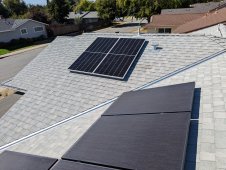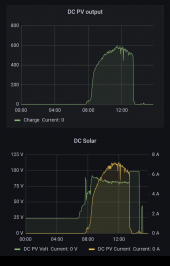400bird
Solar Wizard
I got the two panels mounted on my small east facing roof section this morning.
I friend had planned to come over to help move those giant panels aground. I did the first along. It was mostly fine. The hardest part was picking up 65 lbs of panel that eas halfway up the ladder.
After doing the first, I knew I couldn't do the second.
Luckily the neighbor started lawn work and was able to help out.
Hopefully, tomorrow morning I can run the conduit through the attic. It got hot on the roof quickly this morning. 95 f is too hot for me to want to be on the roof or in the attic. For the first batch of panels in 2018, it was in the 60s and so much nicer.
The old 325 watt panels look filthy in this shot. Because they are...

I friend had planned to come over to help move those giant panels aground. I did the first along. It was mostly fine. The hardest part was picking up 65 lbs of panel that eas halfway up the ladder.
After doing the first, I knew I couldn't do the second.
Luckily the neighbor started lawn work and was able to help out.
Hopefully, tomorrow morning I can run the conduit through the attic. It got hot on the roof quickly this morning. 95 f is too hot for me to want to be on the roof or in the attic. For the first batch of panels in 2018, it was in the 60s and so much nicer.
The old 325 watt panels look filthy in this shot. Because they are...




